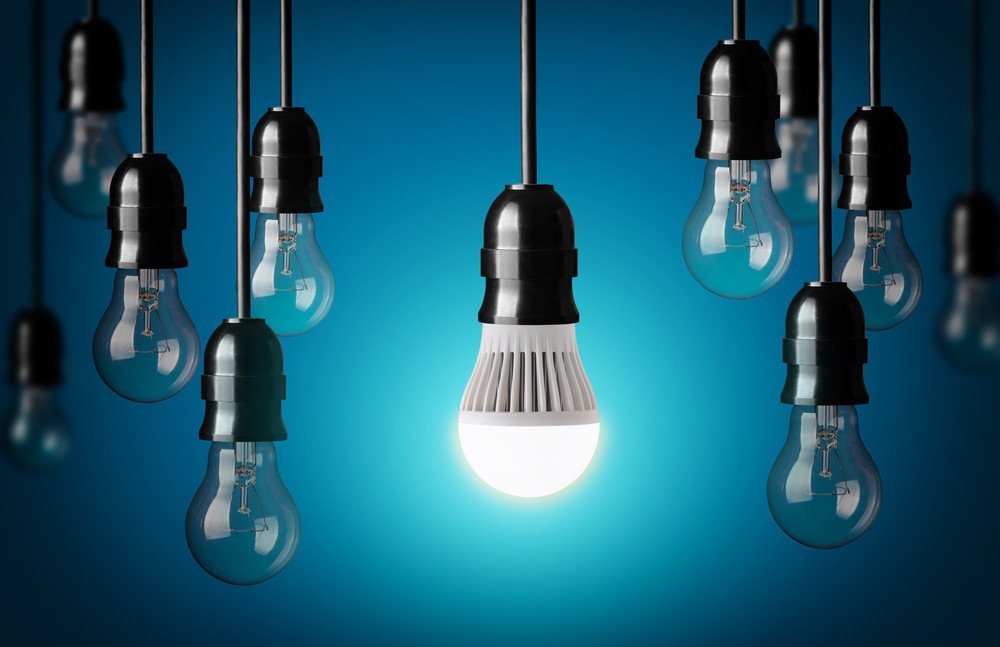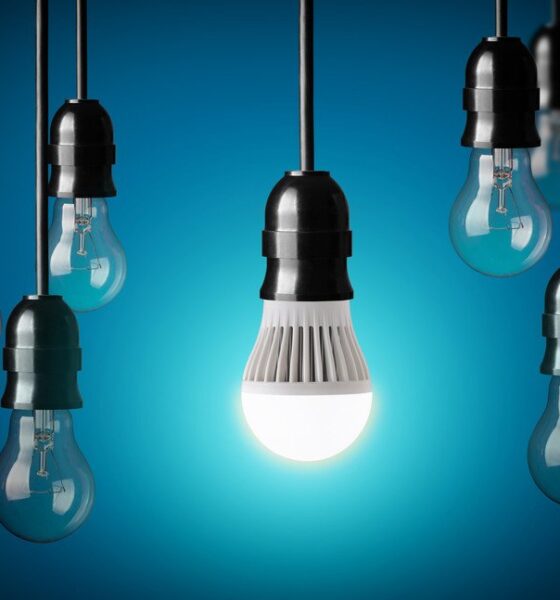

Energy
Is LED Lighting The Hero Of The Sustainability Movement?
There are a lot of great environmentally friendly lighting solutions available on the market today. LED lights are among the best eco-friendly lighting options available.
LED Lights Are Great, Eco-friendly Options
The Department of Energy has lauded the benefits of LED lighting. They expect that they will eventually cut the energy needed for lighting by 40%.
LED lights are essential for many applications. They can do everything from making sure you don’t stumble in the dark to maintaining order in traffic, It’s tough to imagine a world without artificial light – no neon storefront signs, no car headlights that let you see where you’re heading, and nothing to make sure you don’t jam your toes against the door in the night. When the sun sets, the day is pretty much done.
Without LED lights, we’d be living in a completely different world than we are now. Fortunately, since they are here, they make things so much easier for us. However, everything that has advantages also has disadvantages. While the disadvantages of LED lights are nothing compared to those of incandescent bulbs, they are still present. You need to consider the drawbacks of using them, even if you would rather not use a less environmentally friendly alternative. The good thing is that they aren’t as prominent as those of incandescent, and you might haven’t even noticed them until you read this.
The Pros of LED Lights
Let’s begin by discussing their pros – the things that make them so great.
They are efficient.
Saying that LED lights are efficient is a bit of an understatement because they are much more than that. Consider that the average-sized incandescent bulb requires about 60 watts of power to work. Also, try to picture how bright the light from an incandescent bulb is. Now, let’s compare that to LED light sources.
They only need about 12 watts of power. Remember that we’re talking about the same-sized light bulb. Not only do LEDs consume less power than incandescents, but they also shine twice as bright. This is why engineers say that LEDs have a higher lumen or watt score than incandescent bulbs. This ratio means they can produce brighter lights for less power than their incandescent partners.
Another reason LED lights are efficient is that they don’t waste their power. Our sample incandescent light bulb consumes 60 watts of power, and it wastes 90% of that power. That’s why incandescent light bulbs get so hot. They only use one-tenth of their power in producing light. The remaining nine-tenths is expended as heat energy.
The LED, on the other hand, not only needs a mere 12 watts to work, but it also uses most of this power in creating light. That’s the efficiency of the LED.
They last much longer.
LED light bulbs are notorious for their longevity. They can last 21 times as long as incandescent bulbs. This lifespan is remarkable because it can save you a lot of money and a lot of trips to the store. Returning to our sample light bulbs, the average incandescent light bulb will last 1,200 hours or 2 months. That’s not bad, because you can’t expect a light bulb to be eternal.
But then, it pales in comparison to LED light bulbs which can last up to 25,000 hours – they have a ridiculously long lifespan. It amounts to three years, which is a lot longer than two months. Having bulbs that last a long time means you have fewer things to worry about buying when you go to the supermarket or order online.
They cost less.
To avoid confusions, buying a LED bulb for the first time will cost you more money than an incandescent will. In fact, you can expect to spend up to four times the amount you’d pay for an incandescent. However, before you sign off LEDs, here’s a reason why you should go to e-conolight indoor LED lighting, and pick out some in spite of their high price.
Say your house needs a total of ten bulbs, and you buy incandescents at $1 per piece, you’d spend a total of $10. Unfortunately, the bulb will only last for two months of continuous use, and you’d have to replace it. Over three years, you’d have bought $180 worth of light bulbs.
For LEDs, ten bulbs cost about 80 dollars. However, they are supposed to last for three years straight, which means you won’t have to change them at all at that time. That makes them about $100 cheaper than incandescents within the same period.
Do you see how a LED bulb costs less money? It can save you some bucks in the long run.
The Cons of LED Lights
So far, we’ve talked about how great LED bulbs are. They are cheap and bright and efficient. But then, what about the downsides? Let’s look at those next.
They are picky about their power.
For light sources that are supposed to be efficient, LEDs aren’t very accommodating. They can only function within a particular voltage supply. Below or above that, they can be either very useless or very dangerous.
In low voltages, LED lights simply won’t come on. The supply has to be powerful enough to drive the electrons in them to interact in a way that produces light. If the supply isn’t, you shouldn’t expect any light from your LED, and getting an incandescent bulb might be better. If the voltage is too high, their lifespan begins to reduce.
The filaments burn, and the bulbs will last much shorter than they are supposed to. The longer they run with high voltage, the more this happens. If the voltage is too high, they can break, burn, or even explode. That doesn’t sound very efficient.
They are expensive on the first buy.
We already talked about how LEDs are expensive to buy the first time around. It’s especially difficult for most people to commit because they are already used to replacing light bulbs now and then. That’s where the “How many people does it take to screw a light bulb?” joke comes from. This is why investing in a light bulb that will last “forever” may seem like a stretch to some people – a stretch that seems unnecessary.
Bottom Line on LEDs as Energy Efficient Options
Even though LEDs are pretty powerful and useful advancements in lighting, they have their pros and cons as well. In exchange for benefits like longevity and low cost in the long term, they have disadvantages like being expensive on the first buy. Also, cons like requiring a specific power range to function are balanced with highly efficient power consumption. However, the bulk of their cons can be overcome pretty easily, and when it’s all said and done, they are worth the buy.





























